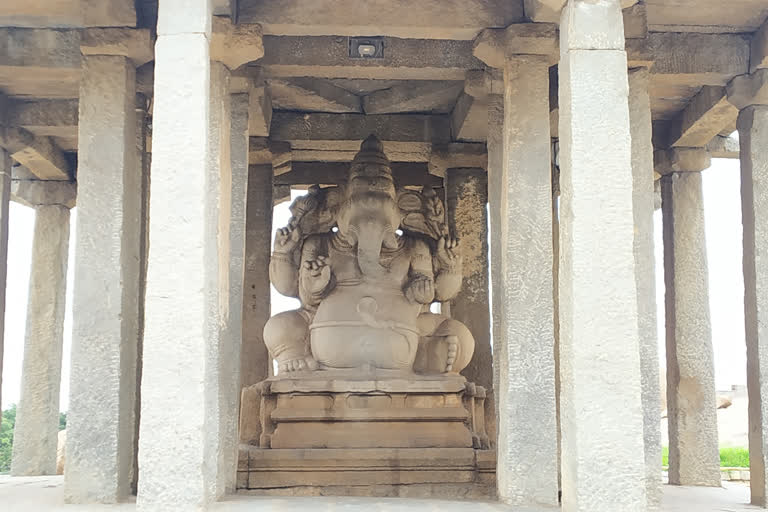Hosapete: Hampi, a UNESCO world heritage site known for its magnificent temples, houses one of the finest specimen of Ganesha temple in India - the Sasivekalu Ganesha.
Carved out of a single block of rock, the Sasivekalu Ganesha Temple has a huge statue of Lord Ganesha - about 8 feet (2.5 metres) tall and is one of the major landmarks in Hampi.
The Ganesha temple is situated near Sree Virupaksha Temple and is revered as one of the oldest shrines and principal destination for pilgrims and remains an active Hindu worship site.
Sasivekalu roughly translates to Mustard Seed Ganesha in Kannada and according to legends, it is because the stomach of the Ganesha idol resembles mustard and hence the name.
Also read: Ganesh Chaturthi: Priest performs morning 'aarti' at Mumbai's Shri Siddhivinayak Temple
The legend also says the funds to built the temple were given by a mustard trader who came to Hampi for business.
Because the mustard seller's business flourished, he built the Sasivekalu Ganesha temple from the profits.
The Ganesha idol in the temple is sitting in a half-lotus position and the right and left hand at the upper side holds a goad and a broken tusk.
The top right hand of the statue holds a modak the left hand is portrayed with a noose.
Another legend says because one day lord Ganesha ate too much his stomach was about to burst, to prevent that from happening he used a snake and tied around his belly.
That's why a snake can be seen around his stomach in the idol.
Another famous Ganesha temple in Hampi is the Kadalekalu Ganesha.
The temple boasts of one of the largest statues of Lord Ganesha in the southern part of India and is situated on the slope of the Hemakuta Hill in Hampi.
Also read: Eco-friendly 'seed Ganesha' all the rage this Chaturthi
Similar to the Sasivekalu Ganesha, the Kadalekalu Ganesha is a remarkable monolithic statue and one of the most popular tourist sites in Hampi.
Located in the north Karnataka, Hampi, an ancient village is dotted with numerous ruined temple complexes from the Vijayanagara empire.
It is believed to have been the country's richest city, which has attracted traders from Persia and Portugal.
In January 2019 the Time magazine listed Hampi as a World Heritage site and as the second must-see place in 2019.




